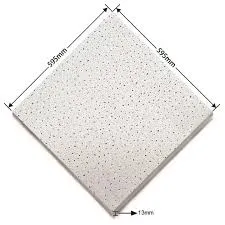Dec . 03, 2024 17:21 Back to list
Guide to Installing a Suspended Ceiling Grid for Drywall Applications
Understanding Suspended Drywall Ceiling Grid Systems
Suspended drywall ceiling grid systems have become an essential component in modern architecture and interior design. These systems provide a functional and aesthetic solution for creating ceilings that are both visually appealing and practical. In this article, we will explore the components, advantages, and installation process associated with suspended drywall ceiling grids.
A suspended ceiling, also known as a dropped or false ceiling, consists of a grid framework that is hung from the overhead structural components of a building. This grid supports lightweight ceiling materials, such as drywall tiles or panels, creating a cavity that can be used for various applications, including hiding ductwork, pipes, and electrical wiring. The ceiling grid itself is typically made from metal, which ensures durability and longevity.
One of the key benefits of suspended drywall ceiling grid systems is their flexibility. These systems can be easily adapted to accommodate different spaces and design preferences. Whether it's a commercial office, a retail environment, or a residential home, suspended ceilings can enhance the functionality and aesthetics of a room. For example, incorporating varying heights and designs can result in a visually dynamic environment that can influence the ambiance and perception of space.
Another significant advantage is the ease of access to utilities. In many commercial and industrial settings, there are extensive networks of HVAC, plumbing, and electrical systems running above the ceiling. Suspended ceilings provide an easy way to access these systems for maintenance and repairs without the need for extensive demolition work. This can save both time and money, making it a cost-effective solution for building management.
suspended drywall ceiling grid

Suspended drywall ceiling grid systems also offer excellent acoustic properties. The space between the suspended ceiling and the structural ceiling can act as a sound buffer, reducing noise transfer between floors and rooms. Additionally, specific ceiling tiles can be selected for their sound-absorbing properties, which is especially beneficial in office environments where noise control is a priority.
When it comes to installation, the process begins with determining the layout of the grid system. It is crucial to plan the design carefully, considering factors such as light fixtures, air vents, and other ceiling-mounted elements. Once the layout is established, the installation of the main runners and cross tees follows. These components create the grid framework that will support the drywall panels.
After the grid is in place, the drywall panels can be installed. This involves lifting the panels into place and securing them within the grid. The edges of the panels are usually taped and finished with joint compound for a seamless look. Once the finishing touches are added, the suspended ceiling transforms the space, providing a clean and polished appearance.
In conclusion, suspended drywall ceiling grid systems are a versatile and practical solution for modern interiors. They not only enhance the aesthetic appeal of a space but also provide functional benefits such as easy access to utilities and improved acoustics. Whether in commercial or residential settings, these ceiling systems offer a perfect blend of style and functionality, making them an ideal choice for anyone looking to upgrade their ceilings. With proper planning and installation, a suspended drywall ceiling can elevate any room, making it a smarter and more attractive environment.
-
Quality Ceiling Trap Doors & Access Panels | Easy & Secure AccessNewsAug.30,2025
-
Durable Ceiling T Grid Systems | Easy InstallationNewsAug.29,2025
-
PVC Gypsum Ceiling: Durable, Laminated Tiles for Modern SpacesNewsAug.28,2025
-
Pvc Gypsum Ceiling Is DurableNewsAug.21,2025
-
Mineral Fiber Board Is DurableNewsAug.21,2025
-
Ceiling Tile Clip Reusable DesignNewsAug.21,2025







